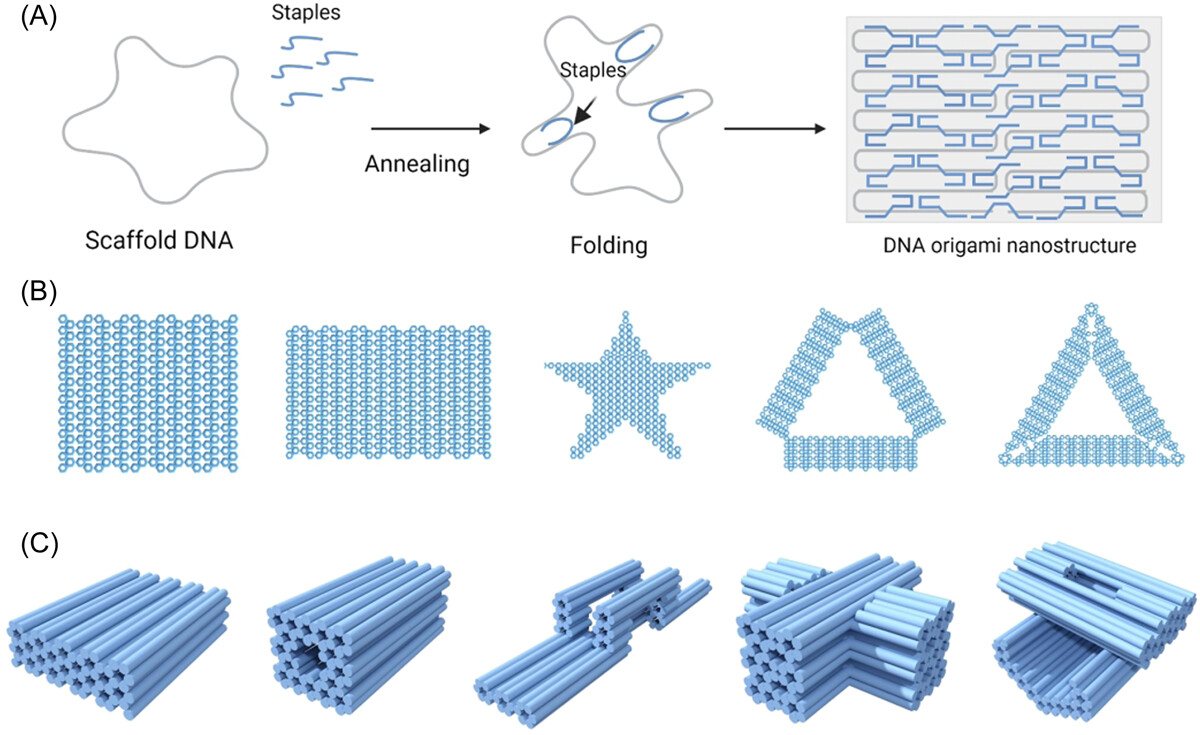MedComm-Biomaterials and Applications | DNA origami technology for biomedical applications: Challenges and opportunities

Open the phone and scan

DNA origami technology. (A) Schematic shows the fabrication process of classic DNA origami nanostructures. (B) Representative two-dimensional DNA origami shapes. (C) Representative three-dimensional multilayered DNA origami nanostructures.
DNA origami, a promising branch of structural DNA technology, refers to the technique of folding a single-stranded DNA scaffold into well-defined nanostructures. In recent years, DNA origami nanostructures have shown considerable promise in a variety of biomedical applications, owing to their biodegradability, unique programmability, and addressability. Despite their popularity, the biomedical application of DNA origami techniques, which exploits their unique programmability and addressability, is rare in previous studies. Most recently, mounting evidence has demonstrated the robustness of DNA origami nanostructures in the spatial organization of functional components at the nanoscale in the biomedical field. These examples provide typical paradigms to fully realize the potential of DNA origami techniques by taking advantage of their unique programmability and addressability. This minireview summarizes the recent advancements of DNA origami techniques in biosensing, biocatalysis, and drug delivery, and the representative examples using DNA origami nanostructures for the spatial organization of functional molecules with nanometric precision are highlighted. We further discuss the possible limitations and challenges for in vivo applications, including stability issues and potential immunogenicity, and finally, propose some strategies to overcome these obstacles to fully realize the potential of DNA origami techniques in biomedical applications.
Article Access: https://doi.org/10.1002/mba2.37
More about MedComm-Biomaterials and Applications: https://onlinelibrary.wiley.com/journal/2769643x
Looking forward to your contributions.
Review : Chunhua Li


